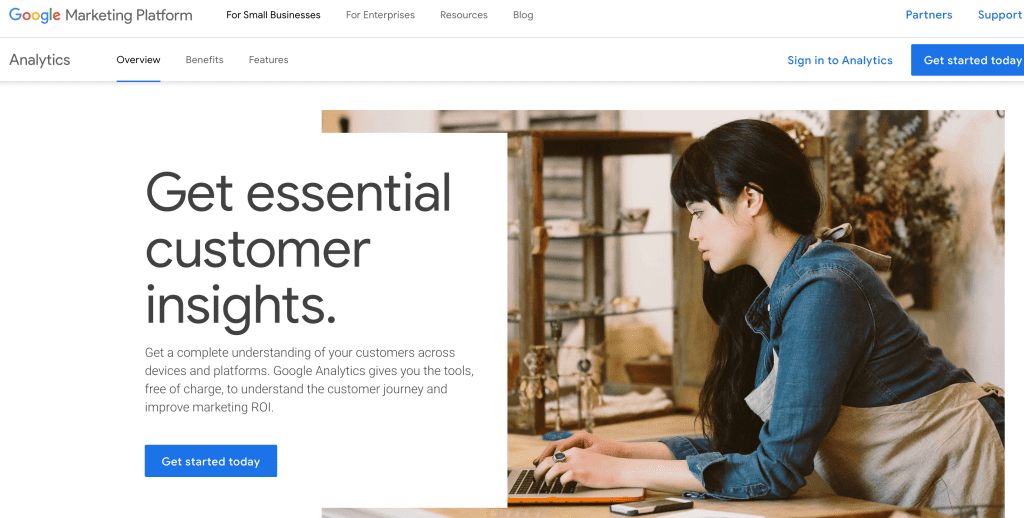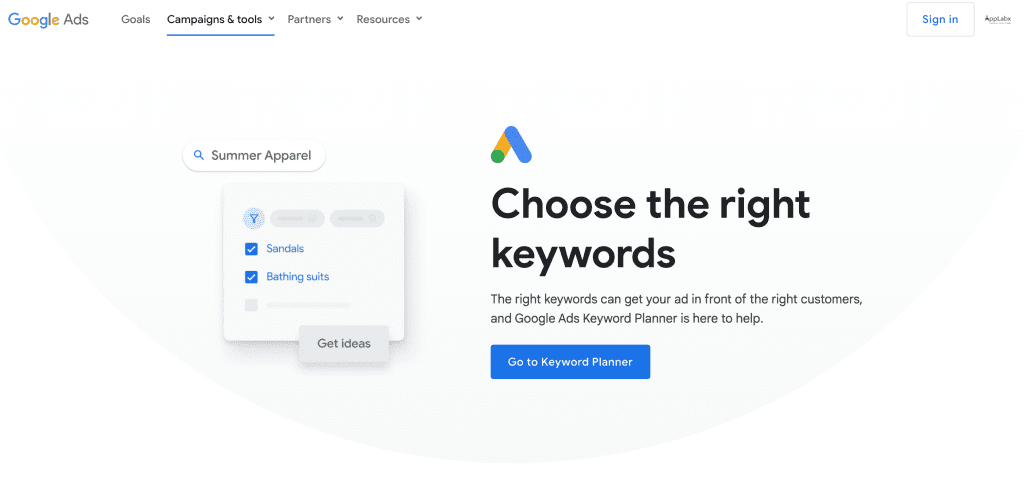Key Takeaways
- Strategic Niche Selection: Elevate your SEO game by strategically choosing an industry aligned with your audience’s interests. Tailor your content to dominate a niche, gaining a competitive edge.
- Competitor Dissection: Unveil success strategies by dissecting competitors with tools like Semrush. Leverage their strengths and weaknesses to inform your SEO tactics and secure a prominent digital position.
- Future-Proof Your SEO: Embrace AI, voice search, and sustainable practices. Stay ahead by integrating evolving technologies, ensuring your SEO strategies thrive in the dynamic landscape of tomorrow.
In the ever-evolving landscape of online visibility, mastering the art of Search Engine Optimization (SEO) is indispensable for businesses striving to secure a competitive edge.
Within the realm of SEO, one crucial yet often underestimated facet is industry analysis – a dynamic process that can spell the difference between digital obscurity and commanding the top ranks of search engine results.
Welcome to our comprehensive guide, where we embark on an illuminating journey through the intricacies of “Industry Analysis for SEO: A Step-by-Step Guide.”

Navigating the Digital Epoch
The digital epoch has ushered in unparalleled opportunities for businesses to connect with their target audiences.
However, the vastness of the online space also poses formidable challenges, making it imperative for organizations to strategically position themselves.
This is where SEO becomes a linchpin, and at the heart of effective SEO lies a profound understanding of industry dynamics.
In this guide, we will dissect the anatomy of industry analysis for SEO, unravelling its multifaceted layers and demonstrating how it serves as the compass for navigating the ever-shifting currents of the digital landscape.
As search engines refine their algorithms and user behaviour continues to evolve, a robust industry analysis emerges as the compass that not only points businesses in the right direction but also empowers them to stay ahead of the curve.
The Strategic Imperative
Why delve into industry analysis when crafting your SEO strategy?
The answer lies in the symbiotic relationship between industry dynamics and search engine algorithms.
Search engines, in their pursuit of delivering the most relevant and valuable content to users, closely scrutinize the contextual relevance and authority of websites.
In turn, businesses that align their SEO efforts with a nuanced understanding of their industry gain a competitive advantage by providing content that resonates with both search engines and their target audience.
This step-by-step guide is not just a roadmap; it is a strategic imperative for businesses seeking to ascend the digital hierarchy.
From selecting the right industry for analysis to conducting a meticulous examination of competitors, keywords, and trends, each step is a pivotal piece of the puzzle that, when assembled correctly, forms a powerful SEO strategy.
Unlocking the Secrets of SEO Success
As we embark on this journey, we will uncover the secrets that have propelled businesses to SEO success.
We will delve into the tools and techniques that transform raw data into actionable insights, equipping you with the knowledge to make informed decisions and outmanoeuvre competitors.
Whether you are a seasoned SEO professional or a business owner looking to demystify the complexities of online visibility, this guide is crafted to cater to all levels of expertise.
Join us as we traverse the intricate terrain of industry analysis, deciphering its nuances and unravelling its potential to redefine your digital presence.
Fasten your seatbelts, for we are about to embark on a journey that promises not just a better understanding of SEO but a transformation of how you perceive and navigate the digital landscape.
Get ready to elevate your SEO game with “Industry Analysis for SEO: A Step-by-Step Guide.”
But, before we venture further, we like to share who we are and what we do.
About AppLabx
From developing a solid marketing plan to creating compelling content, optimizing for search engines, leveraging social media, and utilizing paid advertising, AppLabx offers a comprehensive suite of digital marketing services designed to drive growth and profitability for your business.
AppLabx is well known for helping companies and startups use SEO to drive web traffic to their websites and web apps.
At AppLabx, we understand that no two businesses are alike. That’s why we take a personalized approach to every project, working closely with our clients to understand their unique needs and goals, and developing customized strategies to help them achieve success.
If you need a digital consultation, then send in an inquiry here.
Industry Analysis for SEO: A Step-by-Step Guide
- Understanding Industry Analysis
- Step-by-Step Guide to Industry Analysis for SEO
- Tools for Effective Industry Analysis
- Future Trends in Industry Analysis for SEO
1. Understanding Industry Analysis

Definition and Purpose of Industry Analysis in SEO
In the realm of Search Engine Optimization (SEO), industry analysis serves as the compass that guides strategic decision-making.
It involves a comprehensive examination of the broader business landscape in which a company operates.
This analysis provides invaluable insights into the competitive environment, market trends, and user behaviours that impact a website’s visibility in search engine results.
Why Industry Analysis Matters
Industry analysis is not merely an academic exercise; it is the cornerstone of a successful SEO strategy.
Understanding the intricacies of the industry allows businesses to align their digital efforts with market demands and user expectations.
As search engines increasingly prioritize relevance and user satisfaction, an in-depth industry analysis becomes a prerequisite for achieving and maintaining a prominent online presence.
The Impact on SEO Rankings
Data from a study by Backlinko reveals that organic CTR is largely based on ranking position.
Key Components of a Comprehensive Industry Analysis
To conduct an effective industry analysis for SEO, it is essential to break down the process into key components, each contributing to a holistic understanding of the market dynamics.
Market Trends and Predictions
Staying abreast of industry trends is paramount for SEO success.
Utilize tools like Google Trends and industry reports to identify emerging topics and shifts in user interests.

For instance, in the e-commerce sector, the rise of voice search is a notable trend. Forecasts suggest that by 2024, the number of digital voice assistants will reach 8.4 billion units – a number higher than the world’s population.
Competitor Landscape
Analyzing competitors is a fundamental aspect of industry analysis. Tools such as Semrush and Ahrefs enable businesses to dissect competitor strategies, identify keywords driving traffic to their sites, and unveil opportunities for improvement.
For instance, examining a competitor’s backlink profile might reveal high-authority domains that can be targeted for link-building efforts.
User Intent and Behavior
Understanding user intent is pivotal in crafting content that resonates with the target audience. Utilize analytics tools like Google Analytics to delve into user behaviour metrics.

For instance, if an e-learning platform identifies a surge in searches related to “online courses with certifications,” it indicates a shift in user intent, necessitating content alignment to cater to this demand.
Regulatory and Technological Factors
External factors such as regulatory changes and technological advancements can profoundly impact SEO strategies.
For instance, the implementation of Core Web Vitals as a ranking factor by Google emphasizes the need for websites to optimize page speed, loading times, and overall user experience.
2. Step-by-Step Guide to Industry Analysis for SEO

Step 1: Identifying Target Industry
Choosing the Right Industry for Analysis
Selecting the appropriate industry for analysis lays the foundation for a successful SEO strategy.
Consider the following factors:
- Relevance to Target Audience: Choose an industry that aligns with the interests and needs of your target audience. 90% of top-performing B2B content marketers put the audience’s informational needs first.
- Competitive Landscape: Assess the competitiveness of the industry. Tools like Google Keyword Planner can help identify the level of competition for relevant keywords.

Considerations for Niche Selection
- Long-Tail Keywords: Explore niche markets and long-tail keywords within the chosen industry. Long-tail keywords often have less competition and can be a valuable asset in targeting specific audience segments.
- User Intent: Analyze user intent within the chosen niche. Understanding what users are searching for enables the creation of targeted and relevant content.
Step 2: Competitor Analysis
Importance of Analyzing Competitors for SEO
Competitor analysis is a cornerstone of industry analysis, providing insights into strategies that work and potential gaps in the market. Consider the following:
- Identifying Top Competitors: Use tools like Semrush to identify competitors ranking for similar keywords. This analysis helps understand who dominates the market and why.
- Backlink Profiles: Analyze competitors’ backlink profiles to identify high-authority websites linking to them. This information can guide your own link-building strategy.
Tools and Techniques for Competitor Analysis
- Semrush: This tool offers a comprehensive overview of competitors’ organic search performance, paid search strategies, and backlink profiles.
- Ahrefs: Ahrefs is instrumental in dissecting competitors’ backlink strategies and exploring keywords for which they rank. Understanding their weaknesses can inform your own SEO tactics.

Step 3: Keyword Research
Integration of Industry Analysis into Keyword Research
Keyword research is a linchpin in SEO, and integrating industry analysis enhances its effectiveness. Here’s how:
- Industry-Specific Keywords: Identify keywords specific to the chosen industry. Tools like Moz Keyword Explorer help discover relevant keywords and their search volumes.
- User Search Intent: Consider the intent behind searches. For example, in the healthcare industry, understanding that users often search for “symptoms” or “treatments” can guide content creation.
Utilizing Industry-Specific Keywords for Better SEO Results
- Content Optimization: Incorporate industry-specific keywords naturally into website content, meta tags, and headings. This approach signals to search engines the relevance of your content to users’ queries.
- Long-Form Content: Create comprehensive, long-form content around industry-specific keywords. Backlinko’s analysis found that longer content tends to accumulate more backlinks compared to short blog posts.
Step 4: Trend Analysis
Monitoring Industry Trends for Content Optimization
Staying abreast of industry trends is pivotal for maintaining SEO relevance. Consider the following strategies:
- Google Trends: Leverage Google Trends to identify rising search queries within the industry. For instance, the spike in searches for “sustainable fashion” signals a growing trend in the fashion industry.
- Content Calendar: Align content creation with industry trends. Creating timely content enhances the likelihood of attracting organic traffic.
Leveraging Trending Topics for Increased Visibility
- Social Media Engagement: Amplify content on social media platforms when it aligns with trending industry topics. Increased social engagement can positively impact SEO.
- Featured Snippets Optimization: Create content that addresses trending questions to increase the likelihood of appearing in featured snippets, enhancing visibility.
Step 5: Backlink Analysis
Significance of Backlinks in SEO
Backlinks remain a crucial ranking factor in SEO. Understanding how to analyze and acquire relevant backlinks is paramount:
- Backlink Quality over Quantity: Focus on high-quality backlinks from authoritative sites. A study by Backlinko found the number of referring domains was correlated to higher rankings more than any other factor.
- Competitor Backlink Analysis: Identify backlink opportunities by analyzing competitors’ link profiles. Tools like Majestic can help evaluate the quality of potential backlink sources.
Analyzing Industry-Specific Backlink Opportunities
- Industry Directories and Associations: Seek backlinks from industry-specific directories and associations. These links not only enhance SEO but also establish credibility within the industry.
- Guest Blogging: Contribute guest posts to reputable industry blogs. Guest blogging not only builds backlinks but also positions your brand as an authority.
Step 6: Content Gap Analysis
Identifying Gaps in Industry-Related Content
Content gap analysis involves identifying areas where competitors have content and your site does not. This step is crucial for maintaining a competitive edge:
- Content Audit: Conduct a comprehensive audit of existing content to identify gaps. Tools like Screaming Frog can assist in analyzing website content.
- User Surveys and Feedback: Gather insights from your audience to understand their informational needs. This qualitative data can unveil content gaps not captured by analytics alone.
Strategies for Filling Content Gaps for Improved SEO
- Create Comprehensive Guides: Develop in-depth guides and resources to address topics that competitors may have overlooked. This not only fills content gaps but positions your site as a comprehensive resource.
- Interactive Content: Explore interactive content formats such as quizzes, calculators, or interactive infographics to engage users and differentiate your content from competitors.
Step 7: Technical SEO Audit
Evaluating Technical Aspects Specific to the Industry
A technical SEO audit ensures that your website is optimized for search engine crawlers. Industry-specific considerations include:
- Mobile Optimization: With the prevalence of mobile searches, ensuring a mobile-friendly experience is crucial. Google’s Mobile-Friendly Test can assess your site’s mobile optimization.
- Site Speed: Industry benchmarks should guide expectations for site speed. Tools like Google PageSpeed Insights help identify and resolve speed-related issues.
Resolving Technical Issues for Enhanced Search Engine Performance
- Structured Data Markup: Implement structured data markup relevant to the industry. This enhances the display of rich snippets in search results, improving click-through rates.
- HTTPS Protocol: Secure your website with HTTPS, as it is now a ranking factor. Google Chrome, for instance, marks non-secure sites, potentially impacting user trust.
3. Tools for Effective Industry Analysis

Overview of SEO Tools for Industry Analysis
In the ever-evolving landscape of digital marketing, leveraging cutting-edge tools is paramount for effective industry analysis.
These tools not only facilitate a comprehensive understanding of market dynamics but also empower businesses to fine-tune their SEO strategies for optimal results.
Google Analytics: Unveiling User Insights
- Purpose: Google Analytics is a foundational tool for industry analysis, providing deep insights into website traffic, user behavior, and conversion metrics.
- Benefits:
- User Demographics: Google Analytics offers demographic data, helping businesses understand the characteristics of their website visitors.
- Conversion Tracking: By setting up goals and tracking conversions, businesses can measure the success of various marketing initiatives.
Semrush: Comprehensive Competitor Analysis
- Purpose: Semrush is an all-encompassing tool that aids in competitor analysis, keyword research, and backlink exploration.
- Benefits:
- Competitor Keyword Research: Semrush allows businesses to identify the keywords for which their competitors are ranking, providing valuable insights into market trends.
- Backlink Analysis: Assessing competitors’ backlink profiles helps uncover potential link-building opportunities.
Moz: In-Depth Backlink Analysis
- Purpose: Moz is a versatile tool known for its capabilities in backlink analysis, keyword research, and site audits.
- Benefits:
- Backlink Quality Evaluation: Moz helps evaluate the quality of backlinks, assisting businesses in prioritizing high-authority sources.
- Site Audits: Conducting regular site audits with Moz ensures that technical SEO aspects are optimized for search engines.
Comparison of Popular Industry Analysis Tools
Ahrefs vs. Semrush: Unraveling the Features
- Purpose: Ahrefs and Semrush are two titans in the world of SEO tools, each with its unique features.
- Comparison:
- Backlink Analysis: Ahrefs is renowned for its extensive backlink database, while Semrush excels in providing a holistic view of a competitor’s overall online presence.
- Keyword Research: Semrush offers detailed insights into keyword trends, while Ahrefs provides accurate search volume data.
Google Analytics vs. Adobe Analytics: Choosing the Right Analytics Platform
- Purpose: Google Analytics and Adobe Analytics are prominent analytics platforms, each with its strengths.
- Comparison:
- Ease of Use: Google Analytics is user-friendly and widely adopted, while Adobe Analytics offers advanced features suitable for enterprise-level analytics.
- Customization: Adobe Analytics provides more extensive customization options, allowing businesses to tailor reports to their specific needs.
Emerging Technologies in Industry Analysis Tools
Artificial Intelligence (AI) and Predictive Analytics
- Integration in Tools: AI and predictive analytics are increasingly integrated into industry analysis tools like MarketMuse, transforming the landscape.
- Benefits:
- Content Performance Prediction: MarketMuse, powered by AI, predicts content performance and identifies gaps in existing content strategies.
- User Behavior Forecasting: Predictive analytics tools anticipate shifts in user behavior, helping businesses adapt their strategies proactively.
Voice Search Optimization Tools
- Emerging Trend: With the surge in voice searches, tools focusing on voice search optimization are gaining prominence.
- Benefits:
- Natural Language Processing (NLP): Tools incorporating NLP, such as Voice Search SEO, assist in understanding and optimizing for the natural language used in voice queries.
- Query Analysis: Voice Search SEO tools analyze voice search queries, providing insights into user intent and preferences.
Data-Driven Insights from Statista
Accessing Industry Statistics
- Source: Statista serves as a reliable source for industry statistics and trends, offering a wealth of data across various sectors.
- Application:
- Quantitative Insights: Integrating Statista data into industry analysis provides quantitative insights, supporting data-driven decision-making.
- Benchmarking: Industry statistics from Statista can be used for benchmarking, helping businesses assess their performance against industry norms.
Industry-Specific Tools: Tailoring the Approach
- Industry-Specific Analytics Tools: Some industries have dedicated analytics tools tailored to their unique requirements.
- Examples:
- E-commerce: Tools like Shopify Analytics provide insights into customer behavior, conversion rates, and sales performance.
- Healthcare: Dedicated healthcare analytics platforms offer insights into patient outcomes, treatment efficacy, and operational efficiency.
Utilizing SEO Tools for Market Trends Analysis
Google Trends: Anticipating User Interests
- Purpose: Google Trends is a powerful tool for monitoring and analyzing search trends over time.
- Application:
- Identifying Rising Topics: Businesses can leverage Google Trends to identify emerging topics within their industry, enabling proactive content creation.
- Seasonal Trends: Recognizing seasonal search patterns helps businesses tailor campaigns to capitalize on peak interest periods.
Content Calendar Tools: Timely Content Creation
- Enhanced Planning: Content calendar tools aid in planning and scheduling content creation in alignment with industry trends.
- Benefits:
- Consistency: Ensures a consistent flow of content, keeping the audience engaged and improving SEO performance.
- Timely Relevance: Allows businesses to plan content around specific events, product launches, or industry developments.
4. Future Trends in Industry Analysis for SEO
As the digital landscape continues to evolve, the future of industry analysis in SEO promises exciting transformations.
Staying ahead of the curve is not just a strategic choice; it’s imperative for businesses aiming to secure a competitive edge in the dynamic world of online visibility.
In this section, we’ll delve into the emerging trends shaping the future of industry analysis for SEO, exploring innovative technologies, evolving user behaviors, and strategies that will redefine how businesses approach SEO.

Emerging Technologies Impacting Industry Analysis
Artificial Intelligence (AI) and Machine Learning
- Integration in SEO Tools: AI and machine learning algorithms are increasingly integrated into industry analysis tools, such as Google’s RankBrain.
- Impact:
- Enhanced User Experience: AI-driven tools can analyze user behaviour patterns to personalize content, improving user experience and engagement.
- Predictive Analytics: Machine learning algorithms can predict future trends and user preferences, guiding SEO strategies proactively.
Natural Language Processing (NLP) for Voice Search Optimization
- Rise of Voice Search: With the proliferation of voice-activated devices, NLP is becoming integral for optimizing content for voice searches.
- Impact:
- Conversational Content: SEO strategies will shift toward creating conversational, natural language content to align with voice search queries.
- Semantic Understanding: NLP enables search engines to understand the context and intent behind voice queries, influencing content optimization strategies.
Adaptation to Evolving User Behaviors
User-Centric Search Experiences
- Google’s Page Experience Update: Google’s emphasis on user-centric metrics like Core Web Vitals reflects a shift toward prioritizing user experience.
- Impact:
- Mobile Optimization: With the increasing use of mobile devices, mobile optimization becomes a crucial factor in SEO success.
- Page Speed as a Ranking Factor: The correlation between page speed and rankings underscores the importance of a fast, seamless user experience.
Visual Search Integration
- Rise of Visual Search: Visual search is gaining traction, with platforms like Pinterest and Google Lens leading the way.
- Impact:
- Image Optimization: SEO strategies will need to incorporate image optimization techniques to enhance visibility in visual search results.
- Structured Data for Images: Implementing structured data markup for images becomes vital for providing context to search engines.
Data-Driven Decision-Making
Big Data Analytics for In-Depth Insights
- Big Data’s Role in SEO: The abundance of data generated online necessitates the use of big data analytics tools for in-depth insights.
- Impact:
- Customized Content Strategies: Analyzing big data allows businesses to tailor content strategies based on real-time trends and user preferences.
- Competitive Benchmarking: Big data analytics aids in comprehensive competitor benchmarking, revealing patterns and opportunities.
Predictive Analytics for Anticipating Trends
- Proactive Decision-Making: Predictive analytics enables businesses to anticipate trends before they fully manifest.
- Impact:
- Content Planning: Predictive analytics tools help in planning content around anticipated trends, ensuring timely and relevant publications.
- Market Positioning: Anticipating shifts in user behaviour allows businesses to position themselves strategically within their industry.
Voice Search Revolution
Ubiquity of Voice-Activated Devices
- Impact:
- Conversational Content Optimization: SEO strategies must focus on creating content that aligns with natural language queries.
- Local SEO Optimization for Voice: Optimizing for local searches gains prominence, given that many voice searches are location-based.
Featured Snippets and Position Zero
- Importance of Featured Snippets:
- Impact:
- Structured Data Implementation: Structuring content to appear in featured snippets becomes essential for securing position zero.
- Voice Search Compatibility: Content that appears in featured snippets is more likely to be used as a voice search response.
Mobile-First Indexing and Beyond
Mobile-First Indexing Mandate
- Mobile Usage Trends:
- Impact:
- Mobile Optimization as a Priority: SEO strategies must prioritize mobile optimization to align with Google’s mobile-first indexing.
- AMP (Accelerated Mobile Pages) Integration: Implementing AMP ensures faster loading times on mobile devices, positively influencing SEO.
Beyond Traditional Search Engines
- Expanding Search Ecosystem:
- Beyond Google, platforms like Amazon, YouTube, and social media networks are becoming significant search engines.
- Impact:
- Platform-Specific SEO Strategies: Businesses must diversify SEO strategies to cater to the unique algorithms of non-traditional search engines.
- Video SEO Optimization: As video content gains prominence, optimizing for platforms like YouTube becomes crucial.
Conclusion
Charting Your SEO Success Through Industry Analysis
In the expansive realm of digital prominence, mastering the art of Search Engine Optimization (SEO) is akin to possessing a compass that guides businesses through the intricacies of online visibility.
Our comprehensive guide, “Industry Analysis for SEO: A Step-by-Step Guide,” has delved into the nuanced intricacies of dissecting industries, understanding trends, and implementing strategies that elevate your digital presence to unprecedented heights.
As we conclude this journey, it’s imperative to reflect on the key takeaways that will empower you to chart your course through the ever-evolving landscape of SEO.
Your SEO Odyssey Begins Now
As we conclude this comprehensive guide on Industry Analysis for SEO, it’s evident that SEO excellence is not a destination but a continuous journey.
The steps outlined – from industry selection and competitor analysis to keyword mastery, backlink strategies, technical optimization, and future-proofing – constitute a roadmap for businesses aspiring to not just navigate but conquer the dynamic landscape of online visibility.
The data-driven insights, real-world examples, and forward-looking strategies provided equip you to embark on your SEO odyssey with confidence.
Remember, SEO is not a one-size-fits-all endeavour; it’s a personalized expedition that requires adaptability, innovation, and a relentless commitment to meeting the evolving needs of your audience.
In the ever-evolving digital ecosystem, your industry analysis is not just a guide; it’s your compass, steering you through the complexities toward unprecedented success.
As you implement these strategies and embrace the future trends, your digital presence will not merely exist – it will thrive, resonate, and stand as a testament to your mastery of the dynamic world of SEO.
The journey is yours to chart, and the destination is SEO excellence. Embark on your odyssey now, and let the digital realm be your canvas for success.
If you are looking for a top-class digital marketer, then book a free consultation slot here.
If you find this article useful, why not share it with your friends and business partners, and also leave a nice comment below?
We, at the AppLabx Research Team, strive to bring the latest and most meaningful data, guides, and statistics to your doorstep.
To get access to top-quality guides, click over to the AppLabx Blog.
People also ask
How to do an SEO analysis?
Performing an SEO analysis involves assessing website performance, keywords, and competitors. Start with keyword research, audit on-page elements, evaluate backlinks, and analyze competitors. Leverage tools like Google Analytics, Semrush, and Ahrefs for valuable insights. Optimize based on findings to enhance overall SEO effectiveness.
What is business analysis in SEO?
Business analysis in SEO involves evaluating how online strategies align with business goals. It includes assessing the target audience, competitor landscape, keyword relevance, and ROI. This data-driven approach ensures that SEO efforts contribute directly to the overall success and growth of the business.
What is the difference between a business analyst and an SEO analyst?
A Business Analyst focuses on overall business strategies, processes, and goals, bridging gaps between stakeholders and IT. An SEO Analyst specializes in optimizing online visibility, focusing on website ranking, keywords, and content to enhance a brand’s digital presence and attract organic traffic.




































